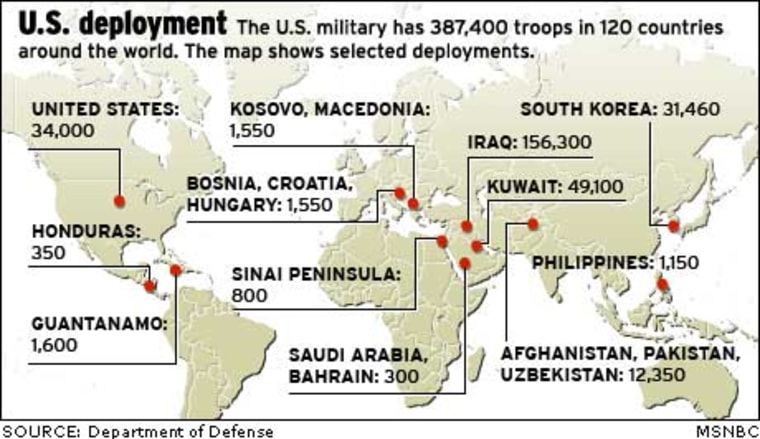The United States has yet to complete plans for any troop withdrawals from Germany and is still consulting with its allies over its intention to fundamentally rearrange American forces around the world, U.S. and German officials said Friday.
Defense Secretary Donald Rumsfeld suggested changes could begin soon, saying Washington is ready to move forces in Europe and Korea that have formed static defense lines rooted in the Cold War.
“It’s time to adjust those locations from static defense to a more agile and a more capable and a more 21st-century posture,” Rumsfeld told reporters Thursday. He would not give specifics on any proposals.
Douglas Feith, the U.S. undersecretary of defense for policy, met German foreign and defense ministry officials in Berlin a week ago to talk about current proposals.
“It was clear that there was not yet a final decision, and that this decision-making and discussion process in the United States is still going on,” German Foreign Ministry spokesman Walter Lindner told reporters Friday.
It is too early to discuss timetables and numbers, Lindner said.
On Friday, the New York Times reported that the troop reduction would mean that the Germany-based 1st Armored Division and 1st Infantry Division would return to the United States.
Some 70,000 U.S. troops currently are assigned to Germany, though the 1st Infantry Division and 1st Armored Division are currently in Iraq. U.S. troops were based in large numbers in Germany throughout the Cold War to deter a Soviet invasion.

Feith’s May 28 talks in Germany followed up meetings in December, a U.S. Embassy official said on condition of anonymity.
The December talks were “very conceptual, and those suggestions were received very positively from the German side,” the official said.
“The farther consultations go down the road the more specific they get, but what Feith was talking about were ideas, proposals we have, but no decisions have been made,” he said.
He would not give details.
More flexible
Rumsfeld wants U.S. troops to be based more flexibly so they can be used for a wider variety of missions, rather than being tied down to a single country.
“There are proposals that have been made,” a U.S. European Command official said on condition of anonymity. “The allies have been part of the consultative process and there have been and are ongoing discussions with them.”
A spokeswoman for U.S. Marine Gen. James L. Jones, the supreme commander in Europe and military head of NATO, said many proposals have been submitted as part of the global review, including by Jones last year.
“He has submitted his plan — based specifically on military considerations — to the defense secretary,” said U.S. Army Col. Catherine Abbott in a telephone interview from Belgium.
Turkey, close to Iraq and other hotspots in the Middle East, has been cited as a place to which some forces — particularly fighter planes — could be moved.
Turkey’s Foreign Minister Abdullah Gul said Friday there had been no new request from the United States to deploy fighter planes at southern Incirlik Air Base.
Incirlik is an hour’s flight from Iraq and the U.S. military has maintained a presence there since the 1950s. After the Turkish parliament refused to allow U.S. grounds troops to deploy on its soil for use in the March 2003 invasion on Iraq, the U.S. military moved its 50 fighter jets out of Incirlik to other bases.
The base was recently used for the rotation of thousands of U.S. troops in Iraq, a sign of improved relations after the split over the Iraq war.